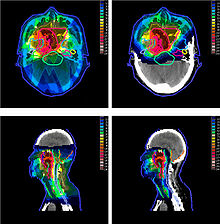Biotechnology vendors and lab suppliers in Minnesota will find a well-funded life science research market at the University of Minnesota, Twin Cities, according to the most recent NIH and NSF research funding statistics. In 2012, the NIH awarded the University of Minnesota, Twin Cities $243.5 million in research funding. The funding was distributed among a number of different departments at the university. For the convenience of our readers, we have composed a list with the number of projects awarded money in each science research discipline and the total amount of funding for those projects:
Tags: 2014, Midwest, 2013, University of Minnesota, Minnesota, University of Minnesota Twin Cities, biotechnology vendors and lab suppliers, BioResearch Product Faire Event, Research Funding, NIH, Life Science, science research, Minneapolis, MN, NSF, lab suppliers, St.Paul, UMinn
In a recent press release, the Mayo Clinic revealed its goal of making its Rochester, Minnesota campus a destination medical center. The Mayo Clinic will invest over $3 billion of healthcare funding in Minnesota, making this not only the state’s largest economic development plan, but one of the largest in the country. An additional $2.1 billion in private investments will also fund the project, which includes investing $3.5 billion in the Mayo Clinic’s Rochester campus over the next twenty years.
Tags: 2014, Midwest, 2013, Minnesota, Rochester, Mayo Clinic, BioResearch Product Faire Event, Funding, MN, lab supplier, RMN, healthcare funding
“It’s pulsing; it’s beating! Now THAT is cool.”
Tags: 2014, Midwest, 2013, Regenerative Medicine, Minnesota, Rochester, Mayo Clinic, BioResearch Product Faire Event, Funding, MN, lab supplier, RMN
While today’s advancements in biotechnology suggest that there’s nothing we can’t artificially produce, sometimes there’s just no substitute for nature’s own recipes. At least, that’s the philosophy behind the University of Minnesota’s Schmidt-Dannert Lab, whose aim is to harness compounds created in natural organisms like plants and fungi that cannot be produced by chemical means. Many of these compounds have beneficial properties that can be used in further research and drug production.
For example, take chloroplasts, the organelles that perform photosynthesis inside plant cells. They provide energy to plant cells when exposed to light. Animal cells don’t have chloroplasts, which means they’re missing out on a valuable energy source. The Schmidt-Dannert Lab, led by University of Minnesota professor Claudia Schmidt-Dannert, is working toward is creating solar-powered animal cells that are more productive and produce different sorts of organic materials.
Tags: 2014, Midwest, 2013, University of Minnesota, University of Minnesota St. Paul, Fungi, Minnesota, University of Minnesota Twin Cities, BioResearch Product Faire Event, Funding, Biotechnology, Research, researchers, Minneapolis, lab, MN, Front Line, St. Paul, UMinn, UMinnSP, U-M, fight cancer
An ingredient of traditional Chinese medicine is making a modern appearance in the treatment of pancreatic cancer. It’s called the Thunder God Vine, and it has been used in teas and traditional medicine for a long time. In recent years, it’s been making a name for itself in the treatment of rheumatoid arthritis. Now, researchers at the University of Minnesota have discovered Thunder God Vine’s surprising potency against pancreatic cancer.
Tags: Midwest, University of Minnesota, Minnesota, Minneapolis, MN
Physics and nanotechnology research at the University of Minnesota has outgrown its 80-year old facility and prompted the construction of the 144,000 sf state-of-the-art building that is now rising on campus. (See the live webcam footage.) The previous home to the Physics Department, the Tate Laboratory, can no longer support the advanced research carried out by more than 150 faculty and graduate students there, nor is it adequate for a field (nanotechnology) that has only relatively recently come into being. The new $83M lab research facility will allow the physics and nanotechnology departments to move forward in this century as well as join forces in collaborative research projects.
Tags: Midwest, nanotechnology, New research facilities, Minnesota, University of Minnesota Twin Cities, 2012, BioResearch Product Faire Event, Research, research laboratories, MN, new construction, BRPF, Minn, Twin Cities
Bioscience researchers from the Mayo Clinic in Rochester Minnesota are taking a trip all the way to Mt. Everest to study the effects of high altitude on the bodies of climbers.
Tags: Midwest, Bioresearch, heart disease, 2012, Rochester, Mayo Clinic, BioResearch Product Faire Event, MN
When the President launched the Advanced Manufacturing Partnership (AMP) last month, a key component was the National Robotics Initiative (NRI), which will pool the resources of multiple government agencies to support the development of robots designed to augment the work and health of human beings. These are known as assistive systems, in contrast to the totalitarian robots of science fiction dystopias that threaten to supplant humans.
Tags: Midwest, University of Minnesota, Translational Research, Midwest life science marketing events, 2011 Research Funding, BioResearch Product Faire Event, MN, Robotics, NSF, UMinn, Twin Cities, 2011
Proton beam therapy is a form of targeted cancer treatment that has fewer debilitating side effects than traditional radiotherapy. The Mayo Clinic is a world-class center for cancer research and care in the Midwest, and now it will expand its holdings to include two new proton beam therapy centers, one in Rochester and another at its sister clinic in Phoenix. The type of advanced pencil beam scanning therapeutic equipment that the Mayo Clinic Proton Beam Therapy Center will use is very expensive (the two facilities will have a combined total cost of over $400M for 8 treatment rooms), and the $100 Million outright gift from philanthropist Richard O. Jacobson made earlier this year will go a considerable way toward advancing the project's progress. Intensity-modulated proton beam therapy is less damaging to the cancer patient's healthy cells (surrounding the cancerous growth) because:
Intensity-modulated proton beam therapy is less damaging to the cancer patient's healthy cells (surrounding the cancerous growth) because:
Tags: cancer research, Rochester, Mayo Clinic, BioResearch Product Faire Event, MN, RMN, Midwest Region, 2011

